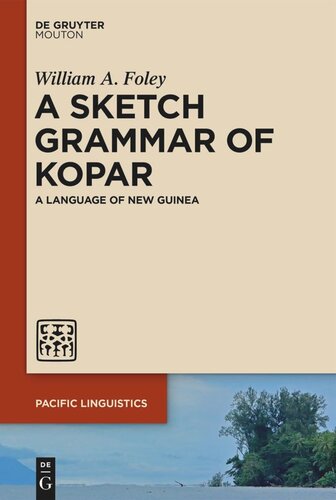

Most ebook files are in PDF format, so you can easily read them using various software such as Foxit Reader or directly on the Google Chrome browser.
Some ebook files are released by publishers in other formats such as .awz, .mobi, .epub, .fb2, etc. You may need to install specific software to read these formats on mobile/PC, such as Calibre.
Please read the tutorial at this link: https://ebookbell.com/faq
We offer FREE conversion to the popular formats you request; however, this may take some time. Therefore, right after payment, please email us, and we will try to provide the service as quickly as possible.
For some exceptional file formats or broken links (if any), please refrain from opening any disputes. Instead, email us first, and we will try to assist within a maximum of 6 hours.
EbookBell Team

5.0
110 reviewsKopar is a very moribund, close to extinct, language spoken in three villages at the mouth of the Sepik River in Papua New Guinea. This is the only description of the language available. It also discusses areas where rapid language shift is affecting the structure of Kopar.
Although the period of fieldwork was necessarily short, this book provides as comprehensive a description as possible of the grammatical structure of this complex and fascinating language. It is quite thorough and detailed and goes well beyond what is normally considered a sketch grammar. It covers all the phenomena essential to description and comparison and gives clear, typologically sound definitions and explanations. The grammar is written with the research interests of language typologists and comparative grammarians foremost in mind.
Typologically, Kopar can be described as a split ergative, polysynthetic language. The language lacks nominal case marking so ergativity or lack thereof is signaled by verbal agreement affixes. Tenses and moods which describe as yet unrealized events, like future and imperative, pattern accusatively for agreement affixes, while those express realized events, like past and present, pattern ergatively. In addition, the ergative case schema is overlaid by a direct-inverse inflectional schema determined by a person hierarchy, a feature Kopar shares with other languages in its Lower Sepik family. As a polysynthetic language, incorporation of sentential elements like temporals, locationals, adverbials and verbals is extensive, though noun incorporation is not.
Sadly, this work is all the documentation we will likely ever have of Kopar, a language of potentially very high theoretical interest, given its rare typological profile. It will certainly be of interest to language typologists and comparative grammarians, and anyone who wants to explore the range of language variation